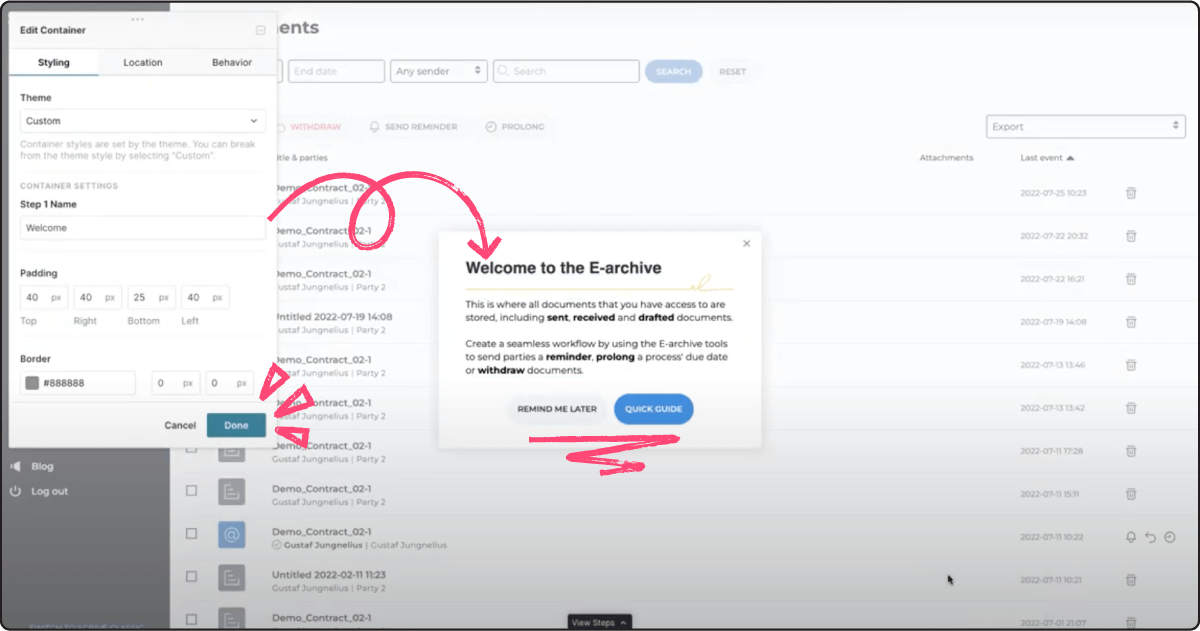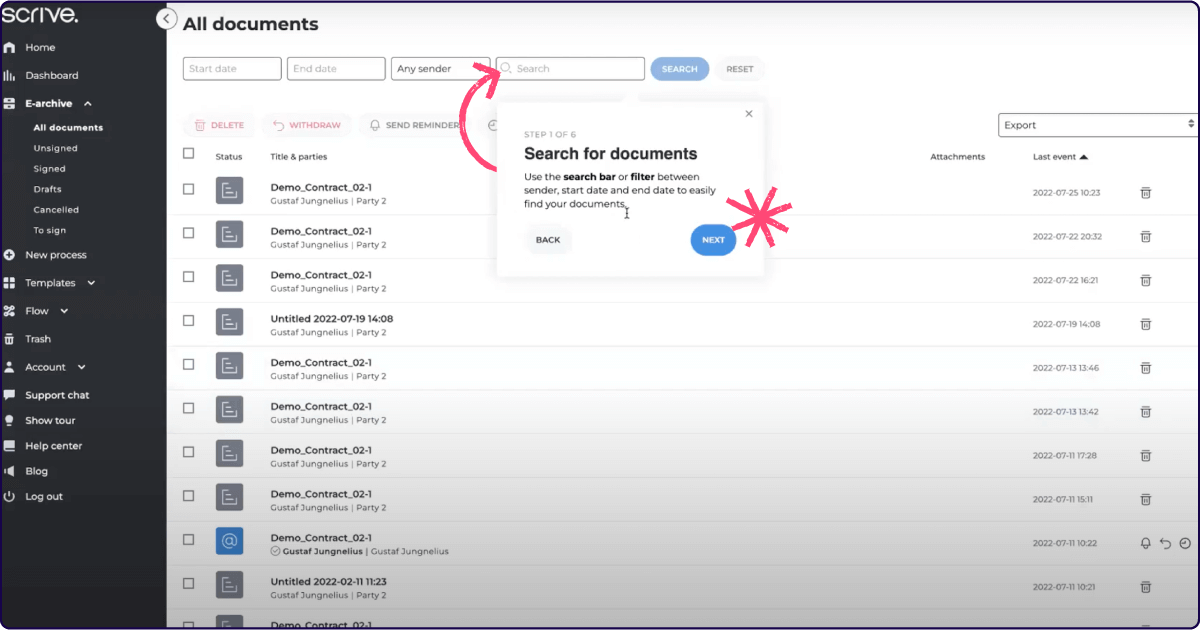Growing app usage is a double-edged sword
Standing closer than six feet apart? Sharing the pen used to sign a contract? Not exactly pandemic-friendly practices. That’s why Scrive’s agreement lifecycle automation platform, which lets users review and e-sign documents, saw massive growth in usage with the onset of COVID-19.
But having so many new users learning the service at the same time was putting a major strain on the company’s customer support team. Gustaf Jungnelius, senior manager of product operations and performance, was determined to solve that problem by improving the platform’s self-service capabilities.
“The way we were training users wasn’t meeting the standard that we wanted to hold. We had to lean on our customer support team a lot because we weren’t setting users up to be successful when they entered the product,” said Jungnelius.
At the time, Scrive’s onboarding consisted of a single 11-step in-app guide to welcome users at their first login—and it only saw a meager 5% completion rate. The team knew the process wasn’t working, but they didn’t know why.
Meeting the surge with better in-app onboarding
Data from Pendo revealed the answer: User onboarding is not a one-size-fits-all sort of thing. Different users have different use cases, and everyone finds value in a product in different ways, big and small. So, Jungnelius and his team got to work on completely redesigning their onboarding process in the context of those insights.
First, they used Pendo data to identify the different “aha” moments—the specific actions users take in an app that lead to higher adoption and retention—that they would need to encourage users to perform. Then, they built and A/B tested new multistep in-app onboarding flows designed to help users perform those actions as quickly as possible.
The redesigned guides are much more concise than the original onboarding flow, and they’re served to different segments of users based on what the Pendo data says about their use case. They also built additional onboarding guides to help users succeed with the features that were generating the most support tickets. This way, the team can keep guides to fewer than seven steps each and deliver them to the most relevant user segments, rather than trying to teach users the entire platform in one go.

The flows also offer users a chance to provide feedback at the end, so the team can constantly improve the onboarding experience, which has netted 5,000 responses to date. “That’s validating some assumptions we had, and devalidating others so we can move forward much more confidently,” said Jungnelius.
Now, Scrive’s onboarding guide completion rate ranges from between 45% and 70%. And, the team is starting to see the effects of that improvement downstream: Support ticket volumes have decreased and documentation promoted through the guides is seeing higher usage. “With self-service like that, you don’t need a person sitting next to the user helping them, and that can scale. You create a mentality in users that they can help themselves,” Jungnelius said.
“It’s been a huge win for us in this time when every dollar counts and efficiency is super important,” Jungnelius said of Pendo. “It’s given us a lot more depth in terms of the things we do know, and it’s given us a lot more breadth for the things we don’t know. It’s made collaboration more grounded in tangible objectives and results, and we have metrics that define what ‘better’ really means.”




